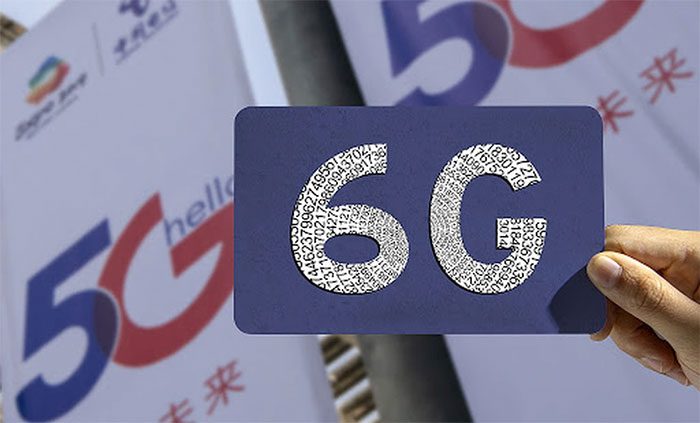Researchers Discover New Control Method for Terahertz Signals, Paving the Way for Ultra-Fast 6G Networks.
The future of mobile data transmission may lie in the ability to “bend” light beams in the air to provide wireless 6G networks with ultra-fast speeds.

“Bending light” could be the key to 6G mobile networks (Image: Shutterstock).
This is the result of a recent study published in Nature’s Communications Engineering journal about 6G technology.
According to the GSMA trade body, 6G networks are expected to begin deployment in 2030 and could achieve speeds thousands of times faster than 5G.
Unlike 5G, which primarily operates in frequency bands below 6 gigahertz (GHz) in the electromagnetic spectrum, 6G is anticipated to operate in the terahertz (THz) frequency spectrum ranging from 100 GHz to 300 GHz.
A significant challenge for high-frequency 5G and future 6G is that signals require a direct line of sight between the transmitter and receiver. This is because radiation closer to visible light is more easily blocked by physical obstacles, such as buildings and walls.
In the new study, scientists suggest that future 6G networks could overcome this challenge by effectively “bending” high-frequency signals.
To achieve this, the research team designed transmitters capable of controlling the intensity and timing of the data-carrying signal. These transmitters allow the signal to maintain its integrity even when the path to the receiver is partially obstructed.
This is because while photons travel in straight lines, THz frequency signals can be bent around objects, transforming the data into a new form with the characteristic of “being unblockable.”

According to GSMA, 6G networks will begin deployment in 2030 (Image: Weibo).
“We have discovered the world’s first curved data link“, said Edward Knightly, co-author of the study and professor of electrical and computer engineering at Rice University.
“This is a significant milestone in realizing the 6G vision of high data rates and high reliability.”
It is known that 5G millimeter wave (mmWave) currently provides the fastest network bandwidth, with theoretical speeds ranging from 10 to 50 gigabits (billions of bits) per second. However, the THz spectrum, which lies above mmWave at frequencies from 100 GHz to 10,000 GHz (10 THz), could offer data transmission speeds of 1 terabit/second—nearly 5,000 times faster.
Although bending light without the power of a black hole is not a new discovery, the significance of this research lies in its potential to make 6G network technology more practical, bringing us closer to realizing a mobile wireless network with “unmatched” speeds.


















































